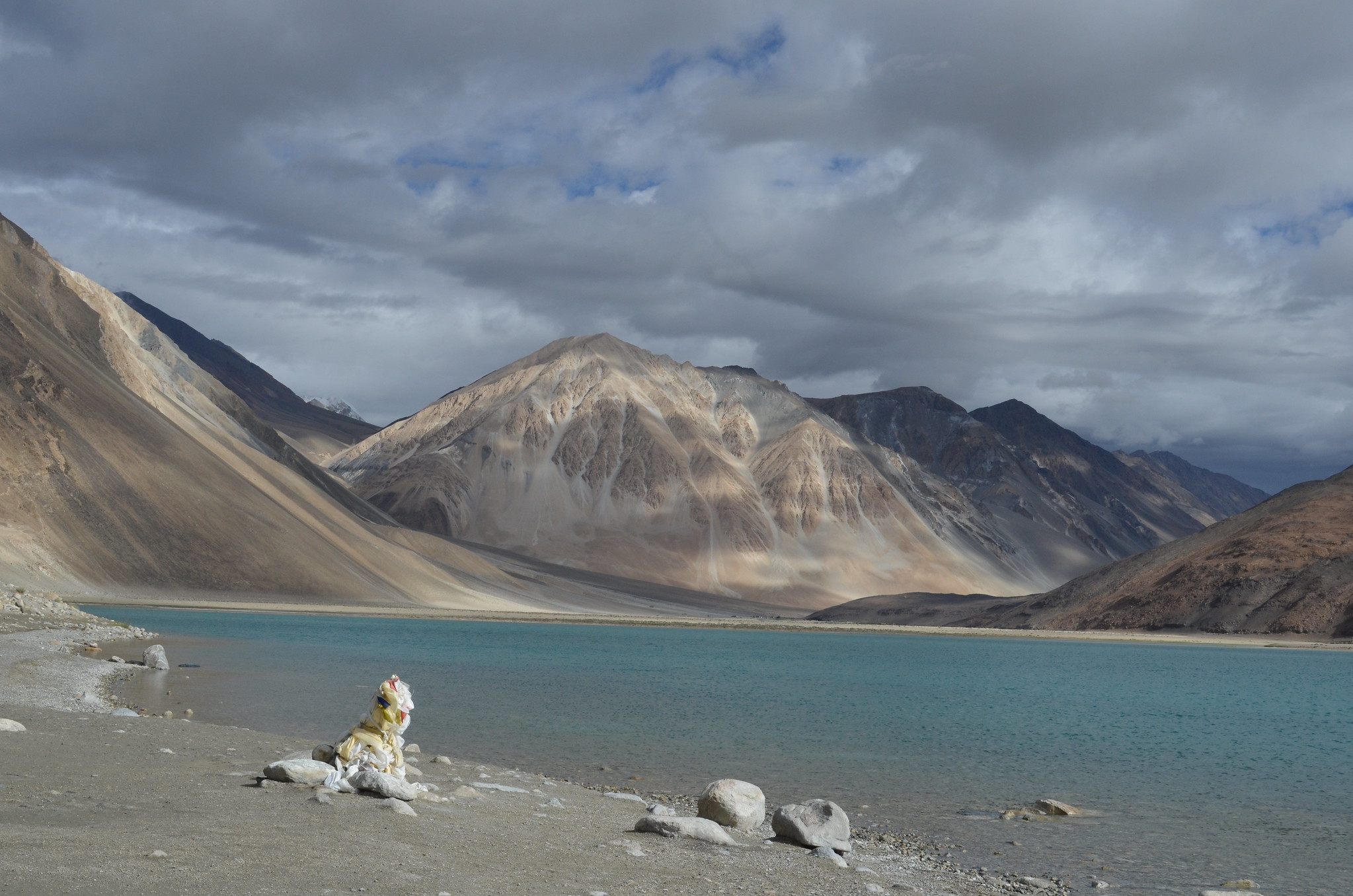India and China Border Briefer: The Shadow of Article 370’s Revocation
Though the diplomatic talks between India and China appear promising, the past six months indicate that both countries may have to adjust their strategic approach along the border and embrace a status quo of vigilance.

Published by The Lawfare Institute
in Cooperation With

With their eighth round of diplomatic talks now complete, India and China seem to be nearing diplomatic closure along their shared border. The diplomacy followed weeks of brewing tension between the two countries and might represent a critical thawing in terse relations as fears of a frigid Himalayan winter mount.
Over the past few months, the world has watched as superpowers India and China have escalated their border standoff in the midst of the global pandemic. From soldiers brazen with iron bars to threats of future attacks, the countries have come the closest they have to war in recent memory. The origins of the India-China conflict, however, first spiked almost six months ago.
What Happened?
Throughout May, the two countries engaged in skirmishes across at least four sites along the Line of Actual Control (LAC)—the disputed and nebulous border between India and China. Three of these confrontations took place in Ladakh, a mountainous area in the Himalayan region of Kashmir, which buttresses Tibet and Pakistan-occupied Kashmir. The skirmishes followed Indian-perceived Chinese aggression: the movement of thousands of troops into disputed areas of the Himalayan frontier. In turn, the Chinese gestured at India’s continued building of infrastructure in the Himalayas as the root of the issue.
The conflict reached its apex in June, when Indian and Chinese soldiers confronted one another with makeshift weapons of clubs and stones in the Galwan Valley of eastern Ladakh. Twenty Indian soldiers and an unknown number of Chinese soldiers died in what was one of the deadliest clashes in the border’s fraught history.
Since the clash in June, the two countries have fortified their unmarked border with thousands of troops and the artillery to match. They also haven’t shied away from sparring in what can only be called a rhetoric war with prominent nationalistic undertones. September marked the first time in decades that gunshots, albeit warning ones, were fired at the disputed border in the region of Chushul, in blatant violation of a 1996 agreement prohibiting the use of firearms at the LAC.
In September, the two countries welcomed a five-point agreement and diplomatic talks to defuse tensions. The agreement reinforced general preexisting norms: a prohibition on the use of firearms and open channels of communication. However, the agreement did not address the recent jockeying over resources or the encroachments from either side.
As talks continued, the dispute captured the U.S.’s eye, despite the intense fervor over domestic elections and the coronavirus pandemic. In October, the U.S. and India signed a military agreement empowering the sharing of sensitive satellite data. The agreement may have represented a concerted effort from both the U.S. and India to confront and curb China’s increasing assertiveness.
Mid-November marked the eighth round of these diplomatic talks between India and China. Some observers are viewing the talks with cautious optimism. In anonymous media interviews, Indian officials have signaled an agreement that includes no-patrol zones, the reduction of military tanks and artillery, and the use of drones to monitor withdrawal. The official Indian statement on the talks, however, only generally indicated that the exchange was “candid, in-depth and constructive.” Meanwhile, reports from China have been relatively mum on the matter.
The Disputed Frontier
The countries’ shared LAC is at the heart of the current dispute. The LAC is the nebulous 2,100-mile border demarcating Indian and Chinese territory. Stretching across high-altitude Himalayan peaks, the LAC is the world’s longest disputed border, despite having seen relatively few skirmishes since a tenuous truce after a 1962 war. The recent skirmishes along the LAC were the first time in decades that either nation saw casualties at the foothills of the Himalayan line.
The LAC has three primary sectors: eastern, central and western. While recent skirmishes map onto the western sector, the LAC’s history is littered with battles over territory. In the eastern sector, China claims land that is almost entirely encompassed by India’s Arunachal Pradesh state as Southern Tibet. Likewise, on the western front, India claims Aksai Chin, the portion of Kashmir administered by China, as included in Ladakh of Jammu and Kashmir. The central sector is buffered by the presence of Bhutan and Nepal, the latter of which has also challenged the extent of its border with India.
The disputed LAC has often been the source of strain on the Indo-Chinese relationship. In 1962, the two fought in a border war, the effects of which were felt in Ladakh. The conflict ended with a tenuous truce and ever-increasing numbers of soldiers on both sides of the border. In the past decade alone, three episodes of note—at Depsang in northern Ladakh in 2013, Chumar in eastern Ladakh in 2014 and Doklam in 2017—spawned local friction turned macro-level political turmoil.
The present dispute, although familiar in some ways, differs from past encounters as well. In particular, the recent conflict has not been concentrated in any one region of the LAC; instead, it has stretched across multiple points along the border, which seems to suggest a growing boldness from both countries.
The Kashmir Connection
The skirmishes at the LAC represent a larger duel over strategic outposts in the Himalayas. At particular stake is the Karakoram Pass, running from India to the Xinjiang region in China. For China, greater access to such routes along the ancient Silk Road route could ultimately facilitate China’s much-desired access to Pakistan, a close ally. For India, the creation of new tunnels along the Himalayan pass would facilitate the movement of military supplies to troops stationed in hard-to-reach, snow-hit areas of Ladakh. For both, new infrastructure in the area could enable critical access to Ladakh’s prime resources: a glacier feeding the world’s largest irrigation system and terrain for the world’s highest landing strip.
The battle over control of the LAC was only exacerbated by India’s decision in 2019 to revoke Article 370 of the Indian Constitution, which had given the Himalayan territory of Jammu and Kashmir a special autonomous status. In a series of legal maneuvers related to the abrogation of Article 370, the Indian government not only stripped the territory of its autonomy but also overturned provisions that shielded Kashmir from land purchases made by non-Kashmiris. Important for China, India also reorganized the region from one singular state—including the regions of Kashmir, Jammu and Ladakh—into two separate union territories under the direct control of the national government. One union territory, which would include the Kashmir Valley and Jammu, would have a legislature, whereas the other, Ladakh, would not.
India maintained that the decision to abrogate Article 370 was purely a domestic one, facially made in the name of development and critiqued for its apparent Hindu nationalist agenda. However, China remained unpersuaded by India’s rhetoric and has claimed that India’s revocation of Article 370 is not only illegal and invalid but also a threat to its own territorial sovereignty. Specifically, China has refused to recognize the newly created Union Territory of Ladakh, in part reiterating that India has wrongly included the Chinese-administered Aksai Chin as a part of Ladakh.
China’s claims to Ladakh have persisted over several decades. China has even redrawn its claim lines in the past, encroaching thousands of square miles further into India. These encroachments have only increased in aggression, perhaps a response to New Delhi’s bold vows to take back Chinese-administered Aksai Chin following the election of Prime Minister Narendra Modi in 2016.
China’s persistence has gained attention. Perhaps hoping to capitalize on international attention, former Jammu and Kashmir Chief Minister Farooq Abdullah stoked the fire, stating that following the abrogation of Article 370, Kashmiris do not want to be Indian and would prefer to be ruled by China instead.
Though the diplomatic talks appear promising, the past six months indicate that both countries may have to adjust their strategic approach along the LAC and embrace a status quo of vigilance. Modi’s recent Diwali remarks, which followed the eighth diplomatic talks, perhaps best emphasize this emboldened stance: “India has shown it has strength and the political will to give a befitting reply to those challenging it. The world now knows that India will not compromise with its interests even one bit.” Ultimately, the world will have to wait and see if the two countries can truly disengage from the quarrels in the face of a harsh winter or if they’ll only dig their feet in the ground even further.





